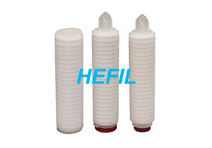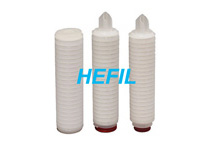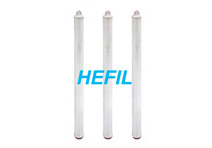With the development of science and technology, the portable HEPA filter has developed so mature. Now the Portable HEPA Filter can provide a very high level of filtration efficiency for the smallest as well as the largest particulate contaminants. Generally speaking, particles retention is achieved by multiple mechanisms of portable HEPA filter working together including sieving, interception, inertial impaction and diffusion. Here we will give a brief introduction about portable HEPA Filter working principle. The portable HEPA filter can capture a minimum of 99.97% of contaminants at 0.3 microns in size. The 0.3 micron benchmark is used in efficiency ratings, because it approximates the most difficult particle size for a filter to capture. The portable HEPA filters are even more efficient in removing particles that are smaller than 0.3 microns and larger than 0.3 microns. The fact that a portable HEPA filter's removal efficiency increases as particle size decreases below 0.3 microns is counter intuitive. However, this is a proven and accepted fact in the filtration sciences.
Now let's get to know the portable Hepa filter H13 working principle. It can be divided into three stages. In the first stage, inertia works on large, heavy particles suspended in the flow stream. These particles are heavier than the fluid surrounding them. As the fluid changes direction to enter the fiber space, the particle continues in a straight line and collides with the media fibers where it is trapped and held. In the progress of diffusion, diffusion works on the smallest particles. Small particles are not held in place by the viscous fluid and diffuse within the flow stream. As the particles traverse the flow stream, they collide with the fiber and are collected.
After diffusion, direct interception works on particles in the mid-range size that are not quite large enough to have inertia and not small enough to diffuse within the flow stream. These mid-sized particles follow the flow stream as it bends through the fiber spaces. Particles are intercepted or captured when they touch a fiber. Finally, Sieving, the most common mechanism in filtration, occurs when the particle is too large to fit between the fiber spaces. A portable HEPA filter would follow the same filtration principles but would have total filtration efficiency greater than 99.97%. In other words, the worst that a HEPA filter would perform would be to capture 99.97% of particles.
Since most contaminants fall into that category, just imagine how much of an impact these portable filters have on the quality of air you breathe. Stuff like dust, allergens, pollen, dust mites, pet dander, mildew and mildew spores are eliminated with the use of a HEPA filter, especially useful for people who suffer with asthma or hay fever. After reading portable HEPA Filter working principle, you must know how does a portable HEPA filter work. If you are interested in portable HEPA filter, you can see more detailed information at www.hefilter.com.





